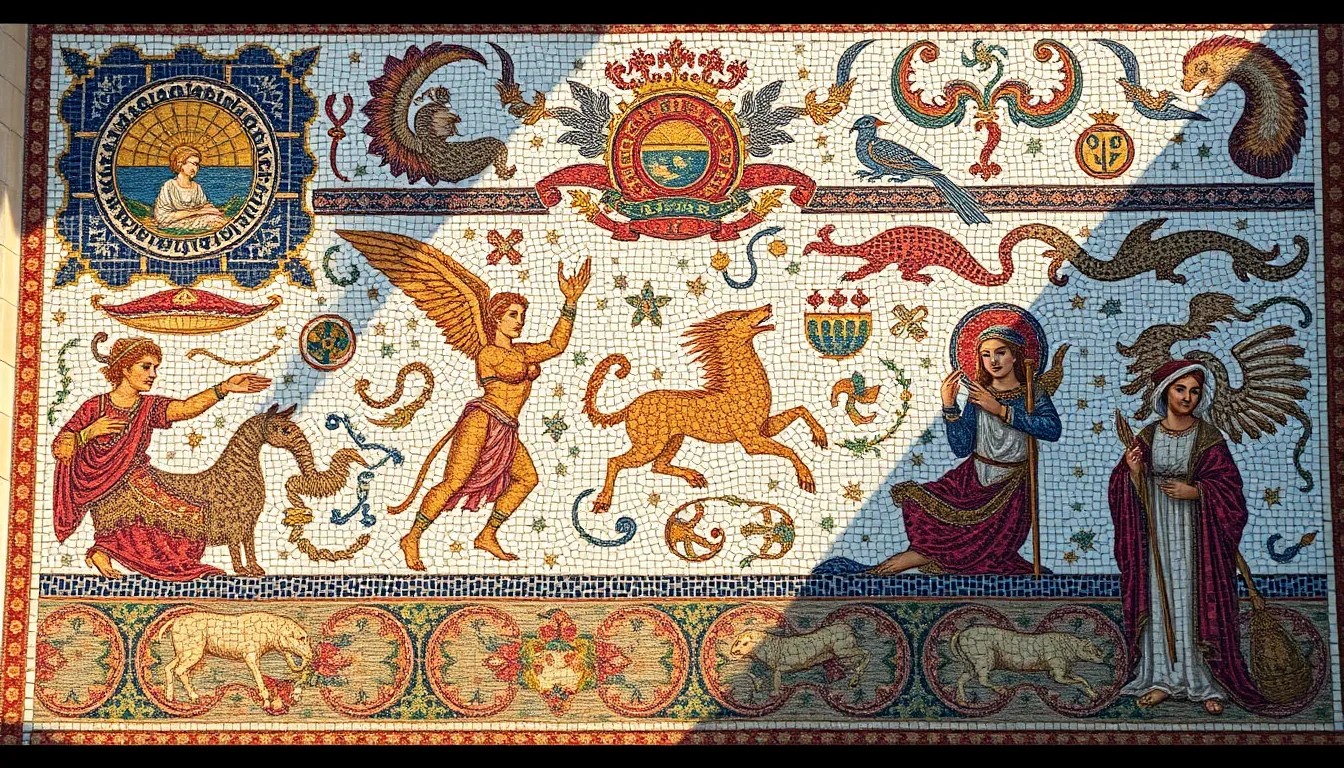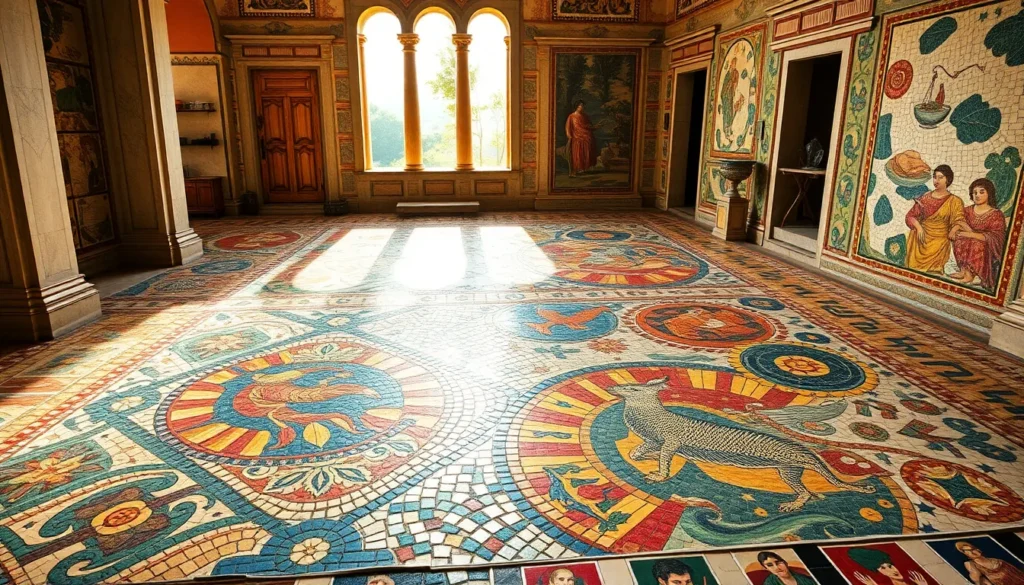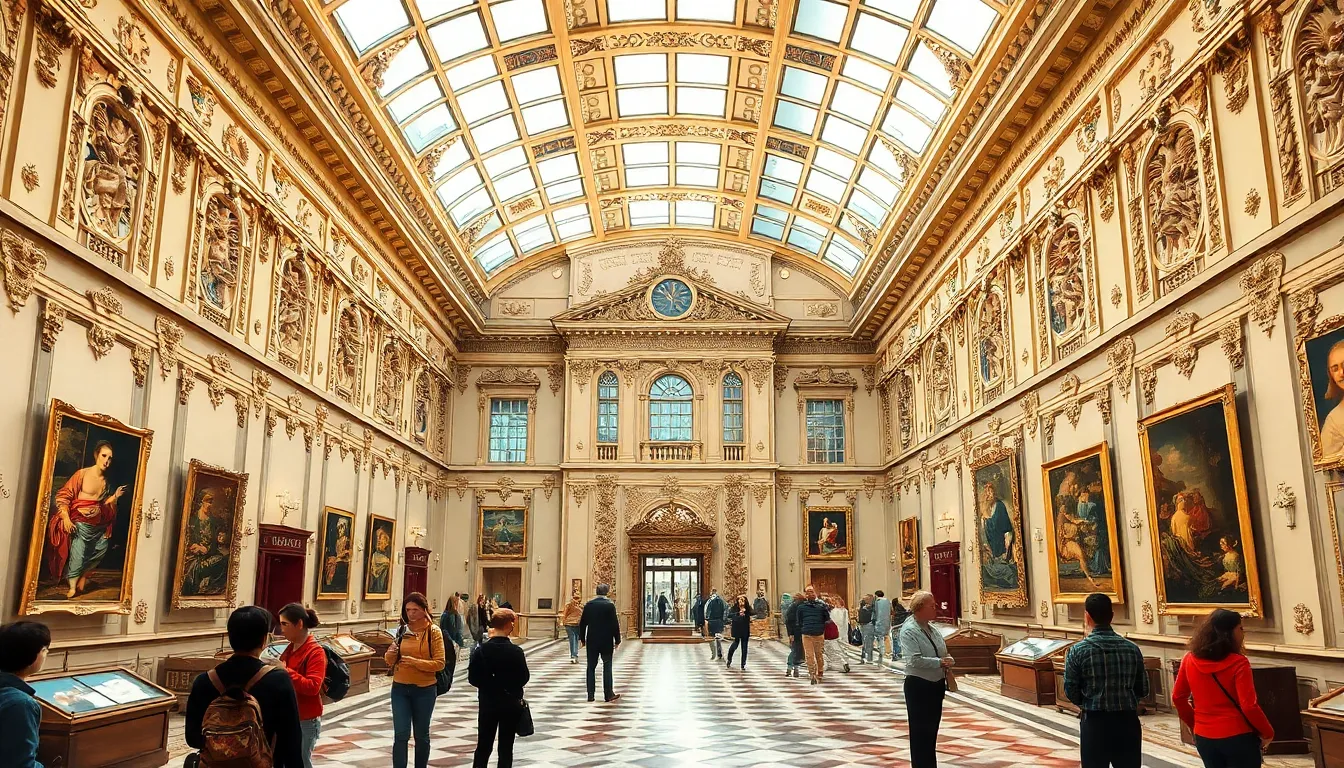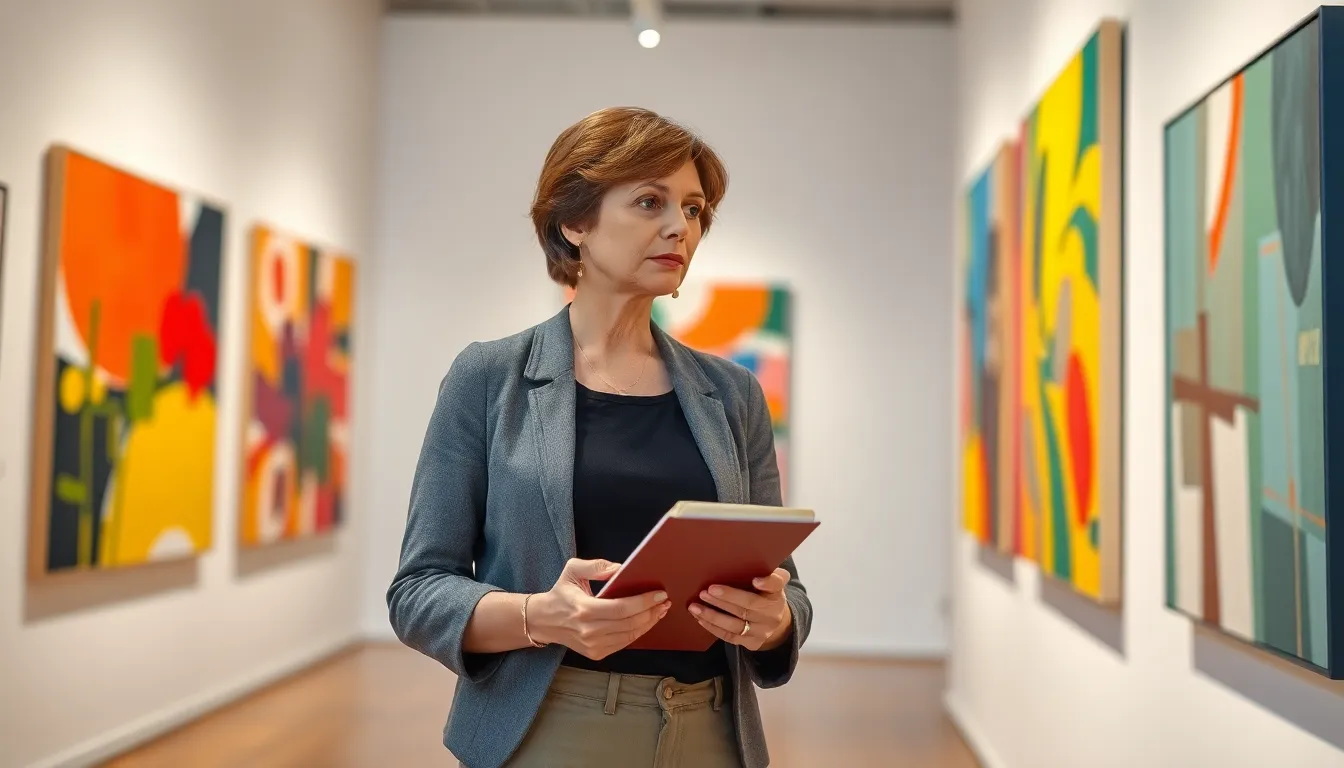Table of Contents
ToggleStep into the vibrant world of Roman mosaics, where art meets history in a dazzling display of creativity. These intricate designs, crafted from tiny colored stones and glass, transformed ordinary floors into breathtaking masterpieces. Imagine walking on a piece of history that tells stories of gods, battles, and everyday life—all while your feet get a taste of ancient luxury.
Overview of Roman Mosaics
Roman mosaics represent a unique form of artistic expression. Typically, they consist of small pieces of colored stone or glass meticulously arranged to create intricate patterns and images. These artworks adorned public spaces, private homes, and grand villas, transforming them into visual masterpieces.
Craftsmanship played a significant role in their creation. Skilled artisans often utilized techniques specific to their trade, such as the opus tessellatum and opus vermiculatum styles. These different methods allowed for varying levels of detail and intricacy in designs, appealing to a range of tastes and preferences.
Subject matter varied widely. Common themes included mythology, daily life, and nature, often reflecting the culture and values of the time. Animals frequently appeared in these designs, signifying various meanings from prosperity to protection.
Geographical diversity influenced Roman mosaics as well. Regions such as North Africa and the Eastern provinces contributed unique styles and materials, showcasing their cultural heritage. The use of locally sourced stones enriched the color palette and texture, enhancing the visual impact of the mosaics.
Mosaics also served practical purposes beyond decoration. They provided durability and waterproof surfaces, particularly in communal bathhouses and swimming pools. The combination of functionality and beauty made them an integral aspect of Roman architecture and interior design.
Historical significance remains evident in surviving examples. Archaeological sites around the Mediterranean reveal the exquisite craftsmanship and artistic achievements of ancient Rome. Many of these monuments continue to attract scholars and tourists, providing insight into the daily lives and aesthetic values of a once-powerful civilization.
Historical Significance

Roman mosaics possess deep historical significance, reflecting the civilization’s cultural richness and aesthetic values. These artworks aren’t just decorative; they function as a lens into ancient society.
Cultural Impact
Mosaics played a crucial role in cultural expression. They portrayed tales from mythology, showcased daily life, and celebrated nature, capturing the essence of Roman values. Community spaces and public buildings adorned with these pieces emphasized their importance in social life. Artisans’ creativity often mirrored regional influences, blending local materials and styles into the intricate designs. Vibrant imagery of animals and mythological figures communicated shared beliefs, reinforcing communal identity across diverse Roman territories.
Artistic Techniques
Techniques used in creating mosaics reveal the skill and ingenuity of ancient artisans. Opus tessellatum employs small stone pieces arranged to achieve geometric patterns, while opus vermiculatum allows for greater detail, producing lifelike images. Artists utilized a variety of materials, including glass, to enhance colors and textures. Each piece was carefully selected and placed to maintain overall harmony, showcasing the craftsmanship involved. These methods ensured durability, making the mosaics resilient to time and wear, further solidifying their significance in Roman architecture and art.
Types of Roman Mosaics
Roman mosaics encompass various forms that demonstrate artistic ingenuity and historical relevance. Among these types, floor mosaics and wall mosaics stand out for their unique attributes.
Floor Mosaics
Floor mosaics occupy significant portions of ancient Roman architecture. Artisans crafted intricate designs using small tiles, known as tesserae, arranged to create elaborate patterns. Common themes included geometric shapes and scenes from mythology, often enhancing the functionality of spaces. Large public buildings frequently showcased these works, allowing visitors to appreciate their beauty while walking over them. While serving as durable flooring, these mosaics also served to communicate cultural stories, reflecting the aspirations and lifestyles of those who inhabited these spaces.
Wall Mosaics
Wall mosaics adorned the interiors of both public and private buildings, transforming walls into vibrant canvases. These pieces often featured detailed scenes from mythology, daily life, and nature, appealing to various tastes. Artisans meticulously placed colorful tesserae to create depth and texture in images. Photographic representations of mythological figures and landscapes often captivated the viewer’s attention, serving both decorative and narrative purposes. Wealthy patrons commissioned these artworks to display their social status and appreciation for artistry, ensuring that wall mosaics became a defining feature of Roman aesthetic expression.
Iconography and Themes
Iconography and themes play crucial roles in the storytelling aspect of Roman mosaics. They reflect various cultural values and historical contexts through rich visuals.
Mythological Representations
Mythological representations frequently appear in Roman mosaics, depicting gods, goddesses, and legendary heroes. Artists drew inspiration from tales that resonated with the audiences of their time. For example, scenes of Bacchus celebrated wine and revelry. Additionally, depictions of Medusa served as protective symbols against evil. Each mosaic illustrated narratives that conveyed moral lessons or cultural beliefs. These representations not only enhanced aesthetic appeal but also reinforced the societal importance of mythology in ancient Rome.
Everyday Life Scenes
Everyday life scenes constitute another prominent theme in Roman mosaics, capturing daily activities and social customs. Depicted subjects range from farming to banquets, showcasing the vibrancy of Roman existence. Harvesting grapes or children playing reflect the agricultural basis of society. In contrast, scenes of leisure activity often reveal the luxury enjoyed by the affluent. Mosaics of these events provided insights into the cultural and social dynamics of the period. By immortalizing everyday moments, these artworks connected the spectators to their own experiences, emphasizing the significance of daily life in Roman culture.
Roman mosaics stand as a testament to the artistic brilliance and cultural depth of ancient Rome. These intricate designs not only enhanced the beauty of spaces but also conveyed stories that resonate through time. The skillful craftsmanship and diverse themes reflect a society rich in tradition and creativity.
As modern audiences admire these historical artworks, they gain a glimpse into the values and daily lives of a civilization that shaped much of Western culture. The enduring allure of Roman mosaics continues to inspire artists and historians alike, ensuring their legacy remains vibrant in today’s world.



